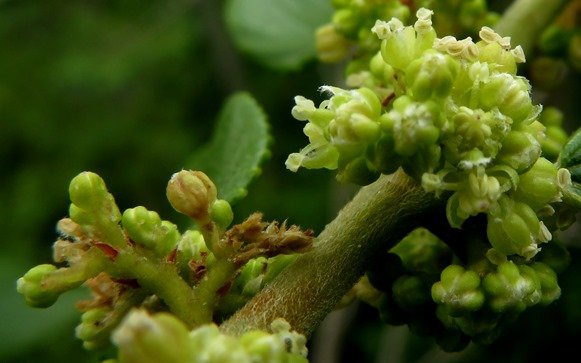Trema orientalis flowers

The small, yellow-green flowers of Trema orientalis grow in compact, cyme-shaped clusters from most upper leaf axils. Male and female flowers are separate, occurring on the same tree.
Floral parts usually appear in fives. A flower is about 1 cm in diameter. The ovary is almost stalkless with a ring of hairs around its base. Bees pollinate the flowers and the tree is a host to several butterfly species as larval food. Flowering happens from spring to early autumn.
The small, spherical fruits are drupes growing in bunches on short stalks, unlike Celtis africana fruits that grow on long stalks. Fruit diameter is about 4 mm to 6 mm. The fruits are dark purple or black when ripe. Flowering continues when fruits start appearing. Birds and fruit bats eat the fruit and disperse the seeds.
The generic name, Trema, is a Greek word meaning hole, referring to the pitted fruit stone (Coates Palgrave, 2002; Schmidt, et al, 2002; Van Wyk and Van Wyk, 1997; Pooley, 1993).

